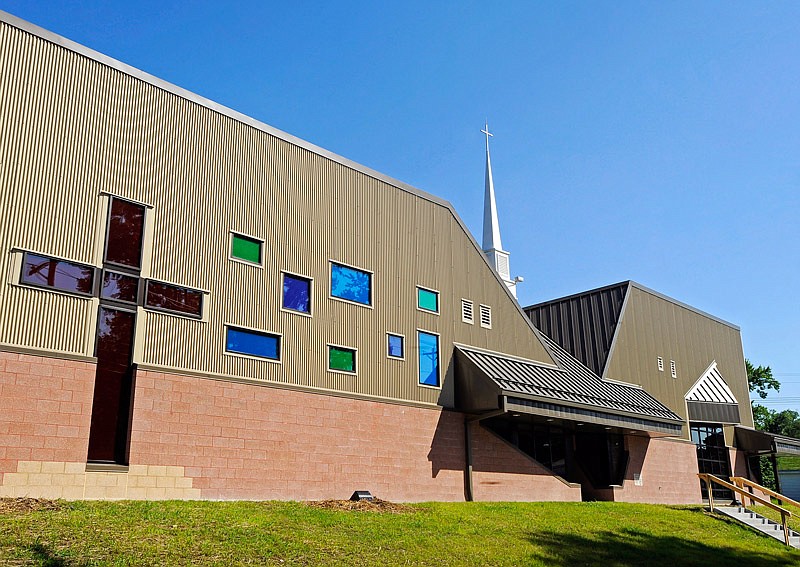After about two hours of discussion, the Jefferson City Council approved an amendment to provide an outlet that allows Quinn Chapel A.M.E. Church to be added to the School Street local historic district Monday night.
The School Street application currently encompasses 27 parcels - including properties in the 600 block of East McCarty Street, all of School Street, the 400 block of Lafayette Street, three houses on the east side of Lafayette Street, one house on East Miller Street and 500 Lafayette St.
The City Council placed the application on the council informal calendar last month after several people spoke in opposition as the district did not contain Quinn Chapel, which has more than 160 years of history.
The council suspended the rules Monday to approve an amended amendment 8-1 that provides an outlet for Quinn Chapel, along with other interested property owners, to be added to the School Street local historic district.
Quinn Chapel must submit an application to the city, which would go to the city's Historic Preservation Commission and Planning and Zoning Commission for review, under the city staff-proposed amendment. After the two commissions review the application, it goes to the City Council for final approval.
The city code does not allow a local historic district application to be amended without the historic district application going through the entire governmental process again.
In the amendment, it said properties had to be directly abutting an established local historic district. After several people requested this language be removed, Ward 5 Councilman Jon Hensley proposed, and the council adopted, language that states property had to be within reasonable proximity of a local historic district and have a similar history.
Quinn Chapel Rev. Cassandra Gould said the church would do the application but favored making the amendment "more friendly" by replacing the term "abutting" in the amendment with "close proximity and a shared history."
"The Lafayette corridor is historic," she said. "It is historic from the 900 block, east of Lafayette all the way back to East McCarty is historic. That's the history, that's the black community."
School Street local historic district applicant Jenny Smith agreed with Gould, adding there were several surrounding properties that could be added to the local historic district, if it is established.
The amendment does not solely apply to the School Street local historic district as it also applies to future local historic districts.
Ward 4 Councilman Ron Fitzwater voted against the the amendment, telling the council it seemed like they were "piecemealing" the city's first local historic district.
"We're piecemealing this issue, not doing it right and not having a track record for how to do it when we do get an application," he said.
Glover Brown, executive director of Friends of Lafayette Street and The Historic Foot District, agreed with Fitzwater, requesting the council reject the School Street application and city staff-proposed amendment.
He suggested Smith work with Quinn Chapel to create a new local historic district application that includes Quinn Chapel. This would ensure the church is included in the local historic district as it is not a guarantee the council will approve Quinn Chapel's application.
While she understood their concerns, Smith said, they had to "piecemeal" this.
"We followed the code," Smith said. "If that code is incorrect, it should have been changed before all of our effort to comply with it. I believe we have to piecemeal this to fix it, so this is part of fixing that original code."
The Historic Preservation Commission and Planning and Zoning Commission recommended approval of the amendment earlier this month.
Separate from the application, Brown proposed an economic development package that would include shops, restaurants and apartments within the same area.
Also Monday, the council approved establishing the city's third overlay district - the National Register Historic Overlay District. It encompasses seven areas listed on the National Park Service's National Register of Historic Places.
The Missouri State Capitol Historic District, Capitol Avenue Historic District, Moreau Drive Historic District, Lincoln University Hill Top Campus District, Broadway-Dunklin Historic District, Munichburg Commercial Historic District and Hobo Hill Historic District are included in the new overlay district.
City staff proposed the new overlay district after state legislators passed a House bill that allows wireless telecommunications companies to place small wireless antennas and facilities in public rights-of-way. If the area is zoned as historic as of Aug. 28, City Counselor Ryan Moehlman said, the companies would have to go through public hearing procedures.
Jefferson City also has the Capitol Avenue Neighborhood Conservation Overlay District and the Lower Jefferson Conservation Overlay District.

